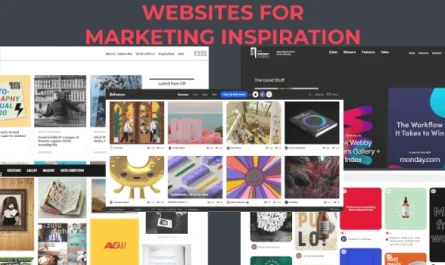Introduction
User experience (UX) isn’t just about design—it’s also about communication. Writing plays a critical role in creating a seamless, intuitive journey for users. Whether it’s guiding users with clear microcopy, simplifying navigation, or reinforcing a brand’s tone, good writing is at the heart of effective UX. If you’re part of a creative agency in India, understanding how writing impacts UX can set your services apart.
Why Writing Is Essential for User Experience
With over 4.9 billion internet users worldwide (Statista, 2023), brands compete not only on design but also on communication. Clear, concise writing ensures users understand what to do and where to go. According to a HubSpot survey, 88% of users are unlikely to return to a website after a poor experience, often caused by confusing or unclear communication.
For marketing agencies and integrated marketing agencies, writing for UX means bridging the gap between users and technology, enhancing usability, and fostering trust.
Ways Writing Helps with User Experience
1. Simplifying Navigation
- Why it matters: Users need clear instructions to navigate a platform effortlessly.
- Example: Replace “Manage account settings here” with “Account Settings.”
- Impact: Users can quickly identify what they need, reducing confusion and frustration.
2. Guiding Users Through Processes
- Why it matters: From filling out forms to completing purchases, clear writing ensures users know what to do next.
- Example: Microcopy like “Enter your email for updates” or “Click ‘Next’ to proceed.”
- Impact: Helps users complete actions smoothly, increasing conversions and satisfaction.
3. Reducing Errors with Clear Instructions
- Why it matters: Vague or unclear text can lead to user errors, like submitting incorrect information.
- Example: “Your password must include at least 8 characters, one number, and one symbol.”
- Impact: Prevents errors, reducing user frustration and the need for support.
4. Reinforcing Brand Identity
- Why it matters: Consistent tone and style in UX writing strengthen brand recognition and trust.
- Example: A playful tone for a creative brand (“You’re almost there—let’s make magic happen!”) vs. a formal tone for a financial app (“Your transaction is processing.”).
- Impact: Builds a connection with users, making the experience more memorable.
5. Enhancing Accessibility
- Why it matters: Accessible writing ensures all users, including those with disabilities, can use the product effectively.
- Example: Avoid using color-based instructions like “Click the green button.” Use text like “Click the ‘Confirm’ button.”
- Impact: Makes platforms inclusive, reaching a wider audience.
6. Building Trust with Transparency
- Why it matters: Users need clear information to feel secure, especially when sharing personal data.
- Example: Replace vague messages like “Your data is safe” with “We use advanced encryption to protect your personal information.”
- Impact: Increases user confidence and loyalty.
7. Providing Support Through Error Messages
- Why it matters: Users rely on error messages to understand what went wrong and how to fix it.
- Example: Instead of “Error 404,” write “Page not found. Please check the URL or return to the homepage.”
- Impact: Helps users recover from mistakes without feeling frustrated.
8. Driving Conversions with Clear CTAs
- Why it matters: Calls-to-action (CTAs) guide users toward completing desired actions, like signing up or purchasing.
- Example: Use “Start Free Trial” instead of “Submit.”
- Impact: Encourages engagement and boosts conversion rates.
Examples of Writing Improving UX
- Slack’s Onboarding Messages: Simple, friendly instructions that guide users step-by-step.
- Google Forms Error Messages: Clear prompts like “Required field” or “Invalid email format” that help users correct mistakes.
- Zomato’s Microcopy: Engaging, witty messages such as “Hungry already?” that reinforce brand personality while guiding users.
Conclusion
Writing is a powerful tool in shaping user experience. From making navigation intuitive to building trust with clear instructions, every word matters in creating a seamless digital journey. Businesses and agencies like creative agencies in India and integrated marketing agencies can leverage effective UX writing to enhance user satisfaction and drive results.
Does this interest you? Connect with us to see how we can help you!
10 Trending FAQs About Writing and UX
- What is UX writing?
UX writing is the practice of creating user-centric text for digital interfaces to guide users and improve usability. - How does writing improve user experience?
Clear writing reduces confusion, simplifies navigation, and ensures users complete actions easily. - What is the difference between UX writing and content writing?
UX writing focuses on functional, concise text for user interactions, while content writing involves creating informational or promotional material. - What are examples of UX writing?
Examples include button text (“Add to Cart”), error messages (“Please enter a valid email”), and tooltips (“Click here to upload your photo”). - How does tone affect user experience?
Tone shapes how users perceive the brand. A consistent tone builds trust and reinforces brand identity. - What tools can help with UX writing?
Tools like Figma, Grammarly, and Maze assist in creating and testing effective UX copy. - Why is accessibility important in UX writing?
Accessible writing ensures all users, including those with disabilities, can navigate a product easily. - How do error messages improve UX?
Clear error messages help users understand what went wrong and how to fix it, reducing frustration. - What role do CTAs play in UX?
CTAs guide users toward desired actions, increasing engagement and conversions. - How can writing help marketing agencies improve UX?
Writing enables marketing agencies to create intuitive, engaging digital experiences that drive user satisfaction and loyalty.




